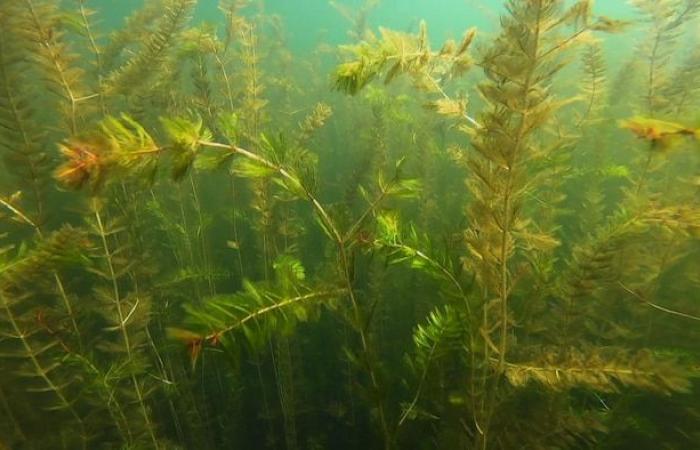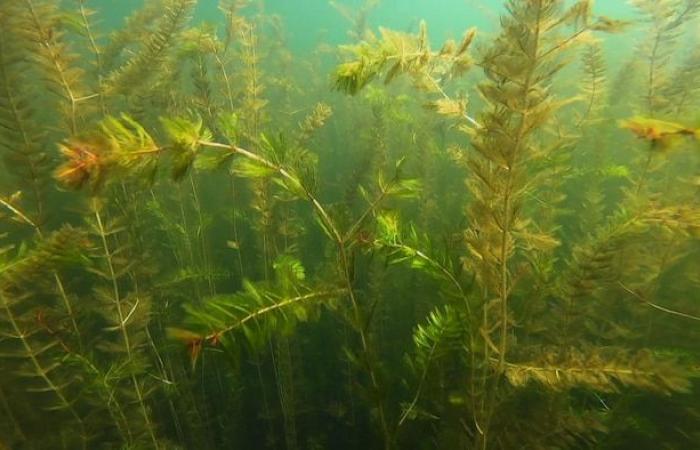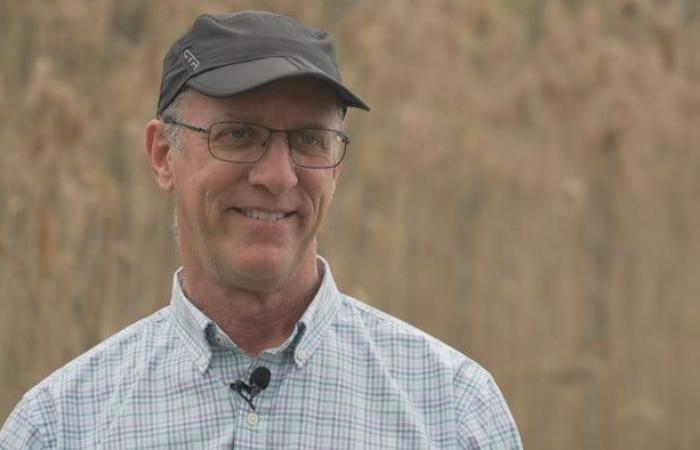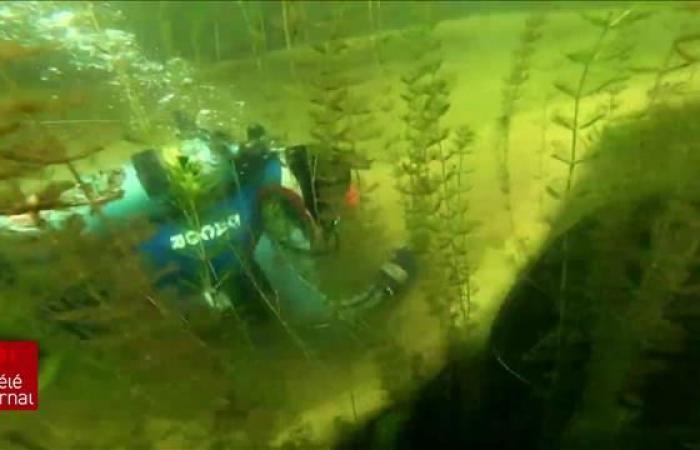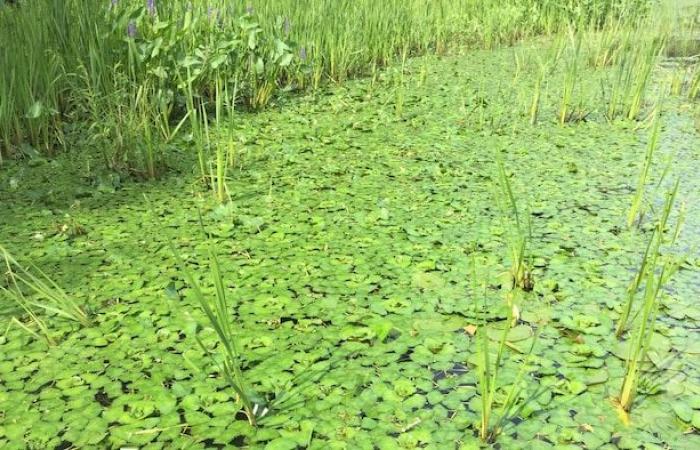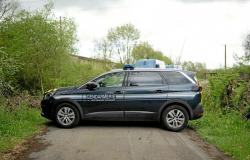While the boaters’ season is so fun, biologists fear the proliferation of invasive aquatic species in the lakes in Quebec. The water chestnut, usually contained among others in the Outaouais river, threatens to invade several bodies of water around the Montreal archipelago.
Invasive aquatic plants are species that can quickly take control of environments they are not from, and this, to the detriment of native species and the ecosystem.
Myriophylls and water chestnuts, for example, suffocate the water bodies that they invade by capturing oxygen on which other species depend.
These species spread quickly, form a cover that blocks light and thus harm biodiversity by harming the flora as much as to the fauna of water bodies.

Open in full screen
With its long stem and its feathers, the myriophyll with ears can seem harmless, but it deprives the native plants of light and nutrients.
Photo : Radio-Canada
This is why biologists try to curb their proliferation towards the main aquatic arteries of Quebec, especially in the south of the province, where these species are more present.
It is a inhabited Quebec problem, particularly in aquatic and humid environments as well as in peri -urban forests
explains Jacques Brisson, professor of biological sciences at the University of Montreal.
With human action and, of course, climate change is a problem that goes growing.

Open in full screen
Jacques Brisson, professor of biological sciences at the University of Montreal.
Photo : Radio-Canada
The clearer winters and the rising summer seasons could contribute to the displacement to Quebec of species which, in the past, would not have been able to push in this environment, according to Professor Brisson.

Rescue operations for water bodies
The threat posed by invasive species is clearly visible in Carillon bay, in Saint-André-d’Argenteuil, near the Outaouais river.
We have dozens and dozens of hectares of chestnuts that have invaded the bay. It is a monospecific carpet of chestnuts almost as far as the eye can see
testifies Raphaël Goulet, biologist and director general of the watershed council of the thousand islands, which this year is an operation of eradication there to combat its proliferation.

Open in full screen
Raphaël Goulet, Managing Director of the Basse Baskets Council of the Thousand Islands.
Photo : Radio-Canada
This species from Eurasia invaded the Outaouais river in 2008, according to the Quebec Ministry of the Environment.
Year after year, the chestnut gained ground on the water bodies of this Laurentides municipality, threatening the lake of the two mountains, where it is so far contained.
What we fear is that the chestnut invades the water bodies of the Montreal archipelago, so that it pours more into the lake of the two mountains, in the River of the Thousand Islands, in the Prairies River, then even in the river possibly
explains Mr. Goulet.
Using a faulty, a kind of combine harvester mounted on a boat, the biologist and his team of eight people will try this summer to remove hundreds of tonnes of water chestnuts from this bay, a Herculean task given the speed with which the chestnuts reproduce.

Open in full screen
The water chestnut is mainly present in the Saint-François and Yamaska rivers, in the Outaouais river and in the lake of the two mountains.
Photo: Gracieuse of Nicolas Bousquet / Cogesaf
In addition, their seeds can remain buried in the bed of a body of water for several years, specifies Mr. Goulet. Even if we remove the whole chestnut for a year, we know that we still have for 10 years to return to the bay to make sure that there is no regrowth.
How to brake their proliferation?
To prevent the spread of these invasive and particularly persistent species, cleaning of boats before their launching is strongly recommended by biologists.
By cleaning the boats, We avoid transporting seeds or even other types of invasive invertebrates from one body of water to another
explains Professor Brisson.
It is also necessary Avoid planting invasive species with us
like the crash of the Caucasus or the Renouée du Japan, adds the biologist.
With information from Charlotte Dumoulin

